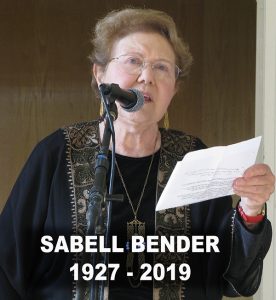
Director’s Desk: My Mother
My mother, Sabell Bender, died two days ago at the age of 92 after many years of painfully declining health. Even in her final years, when her assembly of medical conditions had left her immobile and robbed her of her booming and unforgettable voice, she clung to life with all the dedication and exuberance and yes, stubbornness, with which she had lived her nine decades on the Earth. Sabell was a born director and a force of nature, who, while acknowledging that she was a product of her times, also believed with all her heart that her abundance of talent and creativity made it possible for her to influence the times in which she lived.









